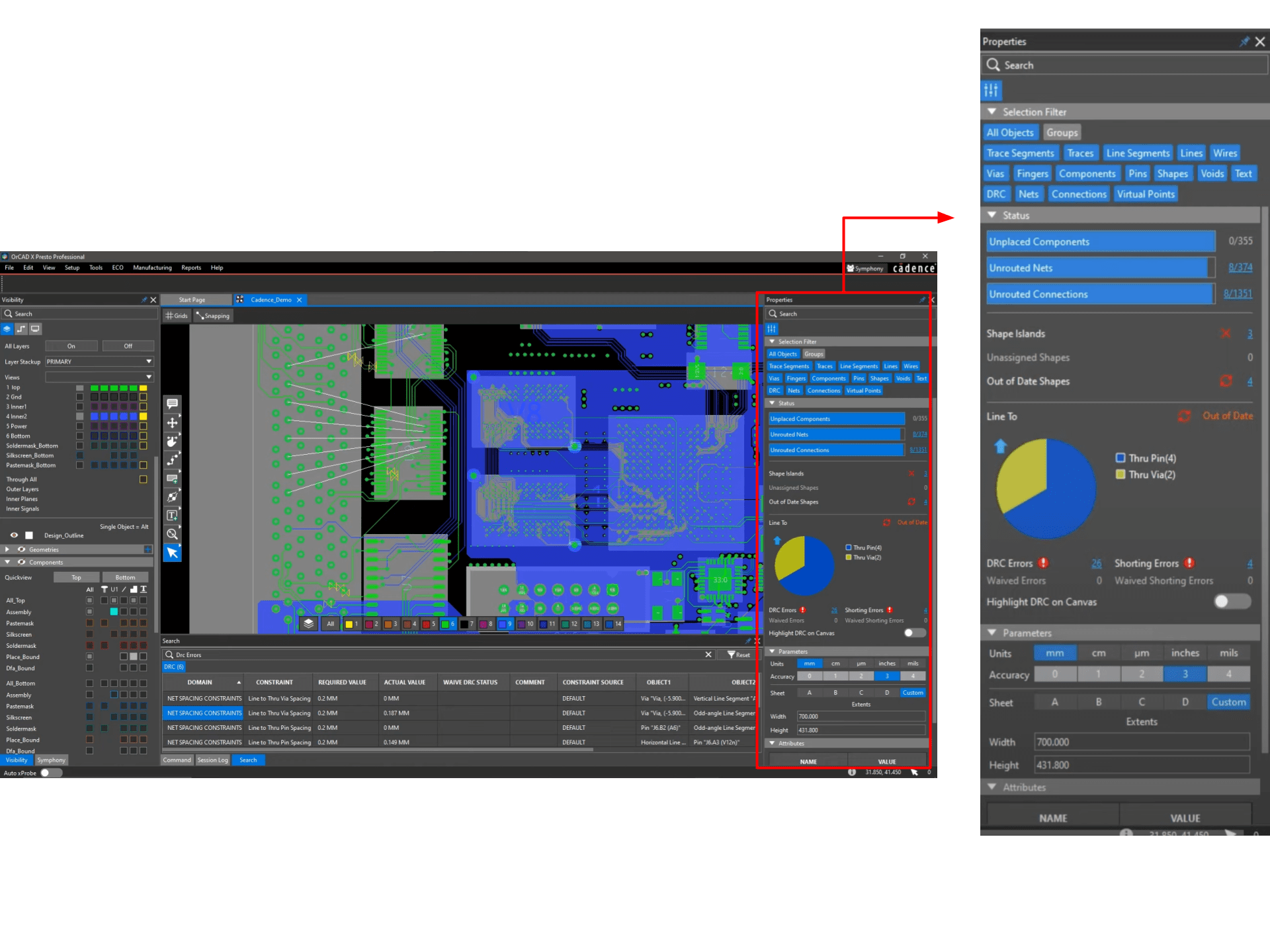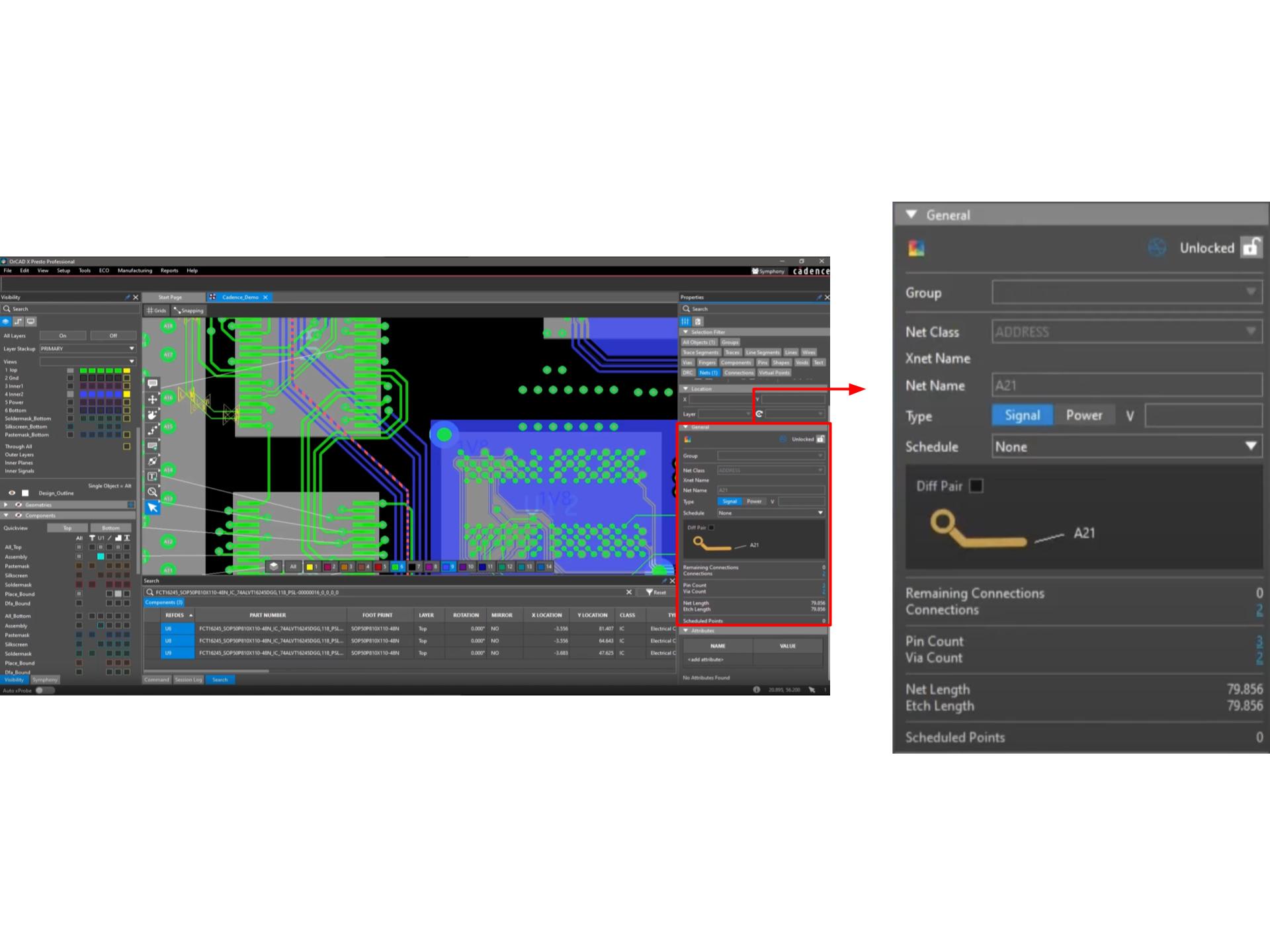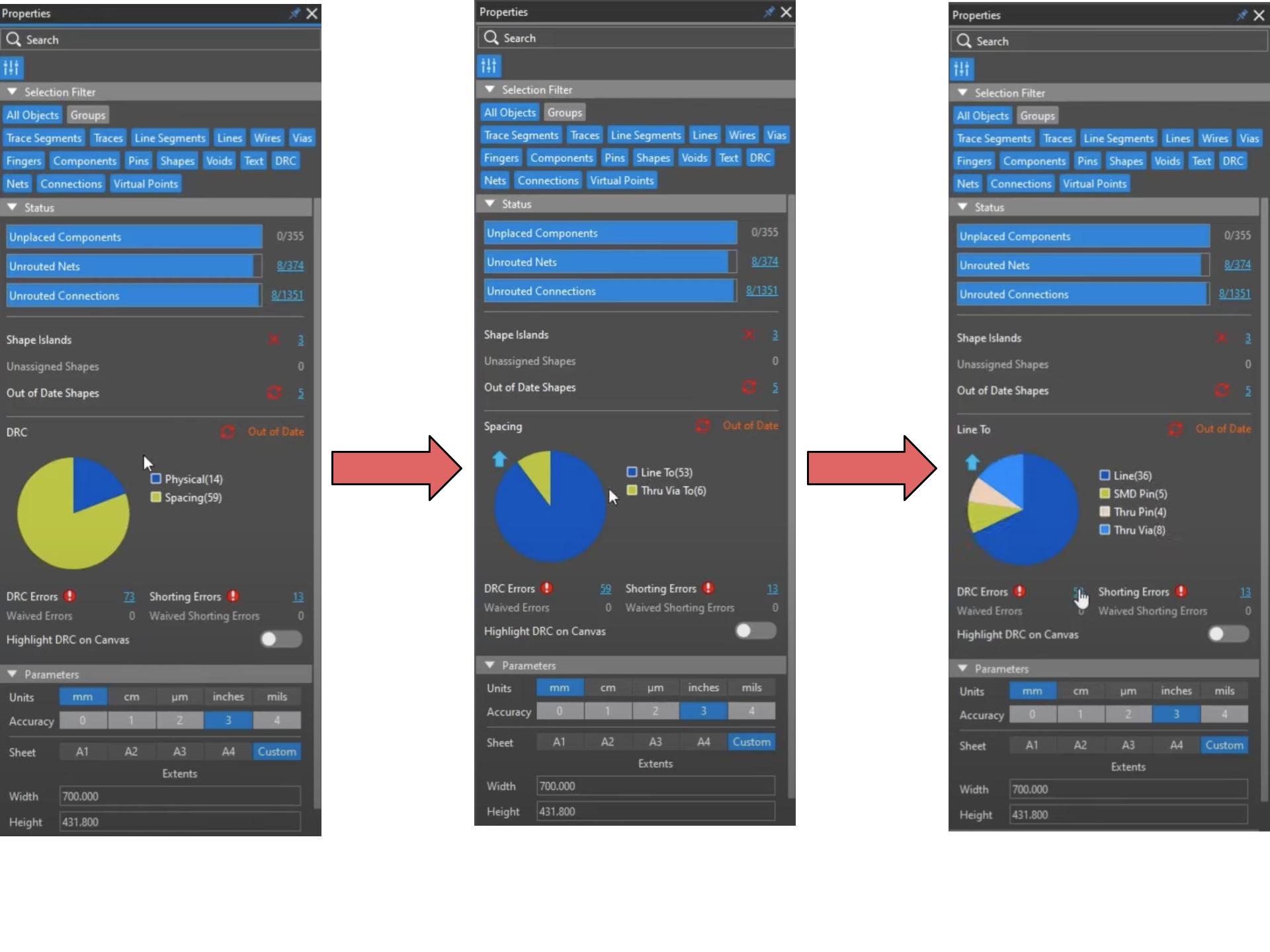How to Use the Properties Panel in OrCAD X
Key Takeaways
-
The properties panel in OrCAD X provides a straightforward way to access and edit the properties of components in a schematic design.
-
The selection filter feature in the properties panel allows for rapid updates to specific parts of the design.
-
The selection filter allows users to quickly locate and highlight specific objects within the design, such as nets or components, and view their properties in the panel. Additionally, the properties panel aids in navigating Data Rule Checks (DRC) by filtering specific error types, visualizing errors on the canvas, and displaying their details for easy validation and correction.
 Default Properties Panel Display (No User Selection)
Default Properties Panel Display (No User Selection)
The properties panel feature in OrCAD X provides designers with a simple and direct way to access the properties of all the components in a schematic design and visualize the relational navigation of a project. Learning how to use the properties panel in OrCAD X saves significant time during the design stage.
Basic Steps on How to Use the Properties Panel in OrCAD X
|
Step |
Description |
Action |
|
1 |
Select the object of focus for the properties panel. |
Click on the desired object you want to inspect on the canvas or click on the category of object to narrow down in the selection filter. |
|
2 |
Inspect desired parameters in the panel. |
Click the blue hyperlinks in the properties panel to expand information. Grayed-out values can't be clicked on. |
|
3 |
(Optional) Edit the information in the properties panel. |
Use the textbox or list to change the desired parameter. Greyed-out values cannot be changed. |
Context Sensitivity in the Properties Panel
The properties panel fields change according to the user’s current selection on a specific design. If no selection is made, the properties tab will show the top-level properties of the project, as shown in the red rectangle below. In this toolbox, any of the blue-linked fonts can be selected to expand for more details in the search menu.
Selecting a specific component will open up a new list of features in the properties panel, with specific actions or properties for that component. For example, selecting an IC in the window below delineates options to arrange the piece (purple box), to move the piece within the canvas (green box), general properties of the component (red box), and attributes of the piece (yellow box). Once again, any blue fonts can be selected to further expand the topic in the search menu.
 Context-Specific Properties Tab (IC selected)
Context-Specific Properties Tab (IC selected)
Also, selecting multiple components will result in the properties tab showing all the features that these items have in common, as is shown with these three ICs selected in the schematic below. Properties that differ among components will be shown by an ellipsis between brackets ([...]).

Context-Specific Properties Tab for Multiple Objects (Three ICs selected).
Using the Selection Filter in the Properties Panel
The selection filter in the properties panel is a powerful feature that allows for rapid localization of all the properties that comprise a schematic. The selection filter (pink box) allows the user to select specific objects in the design, such as nets, traces, components, vias, etc.

The selection filter can be used to isolate specific parts of your design.
Once a specific object is filtered out, all objects of that kind are specifically highlighted on the canvas, and the properties of the selected object will be displayed in the properties panel. For example, by using the selection filter to only select the nets in the design (highlighted in blue in the image below), we are able to see the properties in the general tab of the properties panel (red box) of the specific via by selecting it on the canvas.

The selective filter can be used to visualize properties of objects within a schematic.
Through the selection filter you are also able to quickly update features of parts of your design, like selecting a group of vias and changing their thermal relief type using the drop-down menu (red circle) like in the example below. Grayed-out values cannot be changed.

You can change the settings of your design in parallel with selective filtering.
Efficiently Navigating Data Rule Checks With the Properties Panel
Using the properties panel in OrCAD X to navigate Data Rule Checks (DRC) allows for easy visualization that is needed to validate a design. By using the pie chart in the DRC tab in the properties panel to narrow down the kind of rule check that is desired, you can narrow down the kind of error that you want to focus on. An example of the delineation process to filter line-to-spacing errors is shown below.

To narrow down the type of error, you have to select the desired filter entry in the DRC pie chart.
After navigating through these options and clicking on the highlighted blue link, the search menu (green box) will display a list of errors that you can visualize in the canvas.

Using the DRC filtering to find errors in the rule checking.
Here, you can see the two errors selected in the search box being highlighted in the red box on the canvas, with their corresponding details in the properties tab on the right side of the screen.
The Properties Panel is a very useful tool that can give you quick access to objects and their properties while navigating your design. Now that you know how to use the properties panel in OrCAD X in these new ways, give them a try in your next design to save time — try out OrCAD X now!
Leading electronics providers rely on Cadence products to optimize power, space, and energy needs for a wide variety of market applications. To learn more about our innovative solutions, talk to our team of experts or subscribe to our YouTube channel.